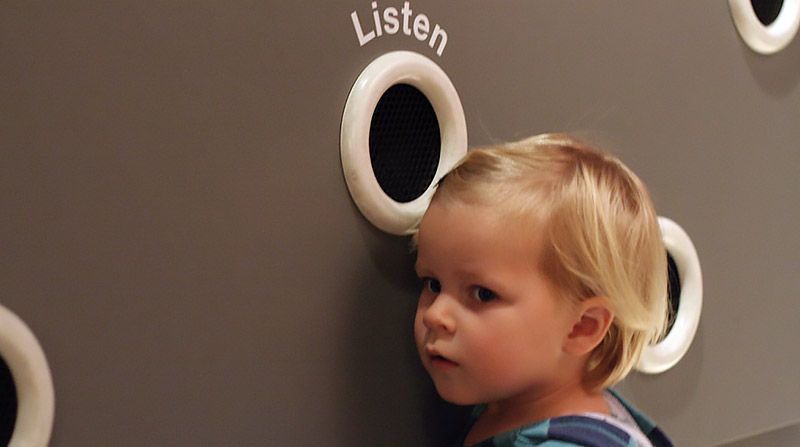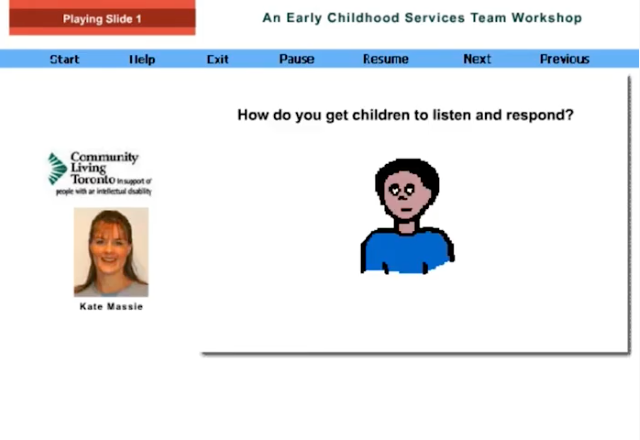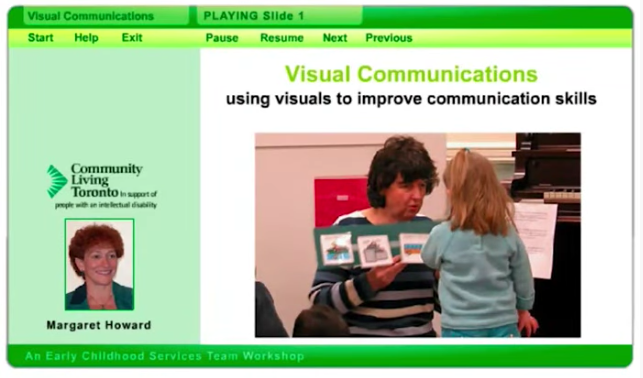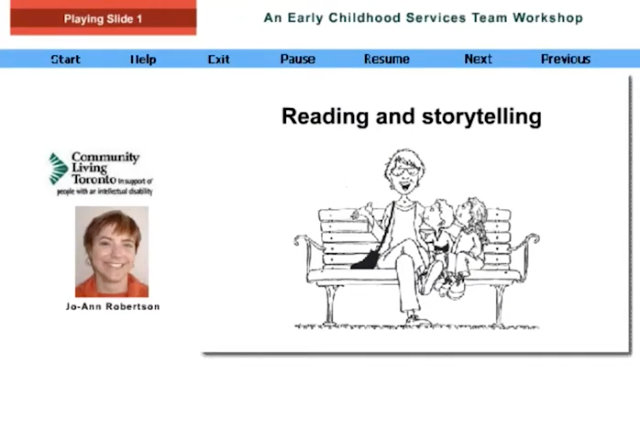
The most rewarding experiences for a parent and a child are to be able to share thoughts, feelings and desires with each other. Successful communication is a two-way street. It’s an active partnership that involves using more than words to send and receive messages.
In this section, we’ve focused on giving you the information and tools you’ll need to become a more effective communicator. We’ve also developed some tools and strategies that will help your child to become more successful and consistent when communicating with you.
Helping your Child Understand
As a parent, you’ll want to do everything you can to help your child understand you and to make the most of daily learning opportunities. For one child this might mean changing the way communication happens by slowing down or simplifying speech. For another child, adding gestures, pictures or signs may be just the right approach.
We’ve built a visual engine that will let you make everything from daily schedules to help your child plan and predict his day to dressing sequences to help him become more independent.
We’ve also pulled together some great workshops and tools you can use every day. Learning can be lots of fun when you use music, play, and storytime to help your child’s understanding of language to grow
- Using visuals
- Creating and using an activity calendar
- Communication posters
- Using signs and gestures
- Talking Matters
Visuals Engine
Create visual supports with our templates and images, or customize them with your own images.
Helping your child to communicate
There is nothing more fundamental than being able to let someone know what you need and want. Some children need extra practice to learn new ways of communicating. At times, picture systems (PECS) or visual supports can really help with this.
In this section, you’ll find resources to help you learn more about the ways children communicate and find some tools for helping your child to move to the next step
- Understanding how and why your child communicates
- Picture exchange communication system (PECS)
- Everyday opportunities to develop communication skills
Giving Instructions
 Play video
Play video
Kate Massey of K.I.D.S (Kids Included in Day Care and Early Childhood Services) shares some very practical strategies for helping your child to understand and follow through with requests.
Context Stories
Here are two simple stories about communication. They’re a good place to start. Michael’s story deals with breaking through the frustration of underdeveloped communication skills, and Hamzah’s story introduces the power of visual communication
Emotions
Understanding and responding to the emotions of others are very important social skills for us to have. These skills help us to develop relationships with other people but they do not come so easily to some children. Without being able to correctly identify and understand the emotions of others, a child is more likely to respond inappropriately.
We’ve created some games and activities to clearly teach emotions. Try some of these with your child to introduce and practice recognizing emotions
Articles
- Identify skills to teach
- Asking a friend to play
- Making a choice
- Child’s communication binder
- How to use the Checklist of Communicative Functions and Means
- Definitions of speech and language terms
- Communicating for Fun Calendars
- My Visit to Toronto Public Library: A Social Story for Everyone
Promoting Communication for Symbolic Communicators
This practical resource booklet has been written by Dolly Bhargava, Specialist Behavior Support Practitioner and Speech Pathologist from Behaviour Help for parents. The booklet discusses a range of visual systems that can be used at home to develop your child’s communication skills. Along with the booklet is a video which demonstrates the use of the strategies discussed in the booklet with children with communication difficulties.
Promoting Communication for Pre-Intentional and Intentional Communicators
This practical resource booklet has been written by Dolly Bhargava, Specialist Behavior Support Practitioner and Speech Pathologist from Behaviour Help for parents. The booklet discusses a range of communication strategies that can be used at home to develop your child’s communication skills. Along with the booklet is a video which demonstrates the use of the strategies discussed in the booklet with children with communication difficulties.


